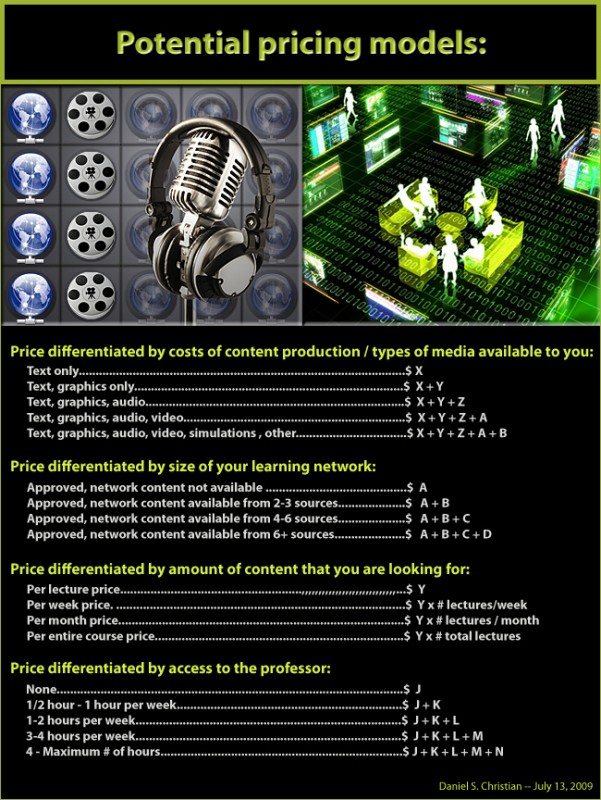Unnatural acts — InsideHigherEd.com by Burck Smith
That said, these deals and actions worry me. Not because they are asking students to pay more – students always have the option to pay more – but because they do not give the students options to pay less.
Pay less? In these budget times? Any student who passed Econ 101 can tell you that, in a perfect market, price restrictions cause capacity constraints. State-mandated tuition levels and political resistance to tuition increases certainly qualify as price restrictions for public colleges. Therefore, the way to increase capacity is to allow higher prices for those willing to pay for it through a provider that’s not subject to state oversight. While these deals will undoubtedly allow greater enrollments and expand access to higher education, they do nothing to address the core failures of higher education economics. Indeed, higher education, abetted by an outdated accrediting and financial aid model, dramatically overprices many courses.
…
Economist Paul Romer wryly noted that “a crisis is a terrible thing to waste.” Indeed, the higher education financial crisis presents an opportunity to examine basic pricing and financing assumptions in higher education (emphasis DSC). Agreements like the ones made by Bristol and in California should be welcomed as a way to expand capacity in high-demand fields. However, such agreements can only be embraced if similar agreements are made or policies enacted that allow students to more easily receive credit for taking much more affordable courses at other institutions and in other formats. If public colleges plan to allow students to pay variable tuition for more expensive courses, they should also allow variable pricing for less expensive courses. With many education providers – for-profit, nonprofit, accredited and unaccredited – available to provide additional educational capacity, colleges and their legislative overseers need to look at partnerships that will help students reduce tuition in addition to those that increase it. Given that this is in the student’s interest, not the institution’s, this might be the most unnatural act of all (emphasis DSC).
From DSC:
- The alluded to agreements tell me (again) that this is a game-changing environment. We aren’t going back to the way things were 5-10 years ago.
- Also, I agree with Burck’s thinking here in that we need models that will cost the students less — not just models that more expensive to offer/provide. Again, that’s not to say that the models that cost more are bad. In fact, if you are a student meeting in a face-to-face class that is being taught by an experienced faculty member and that only has 15-25 students in it, you are — and will be — paying a higher price for that type of excellent learning environment. This is reasonable.
- But institutions of higher education need to work even harder to offer a greater variety of delivery methods and at a variety of prices. I propose that we offer more blended and online-methods — as well as face-to-face methods — but that have online-based access to faculty members, tutors, guides. We need to think about what options might be out there for pricing our offerings…along those lines, here’s a graphic I created last July:









